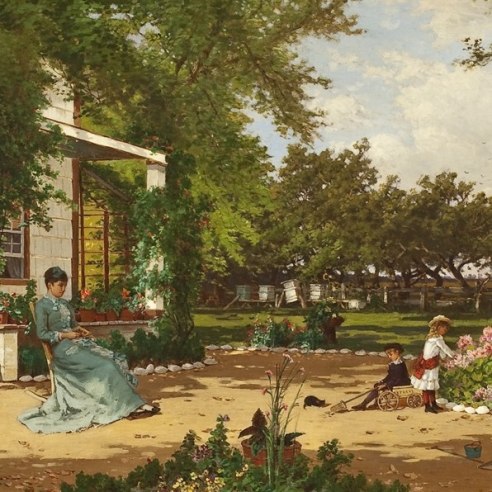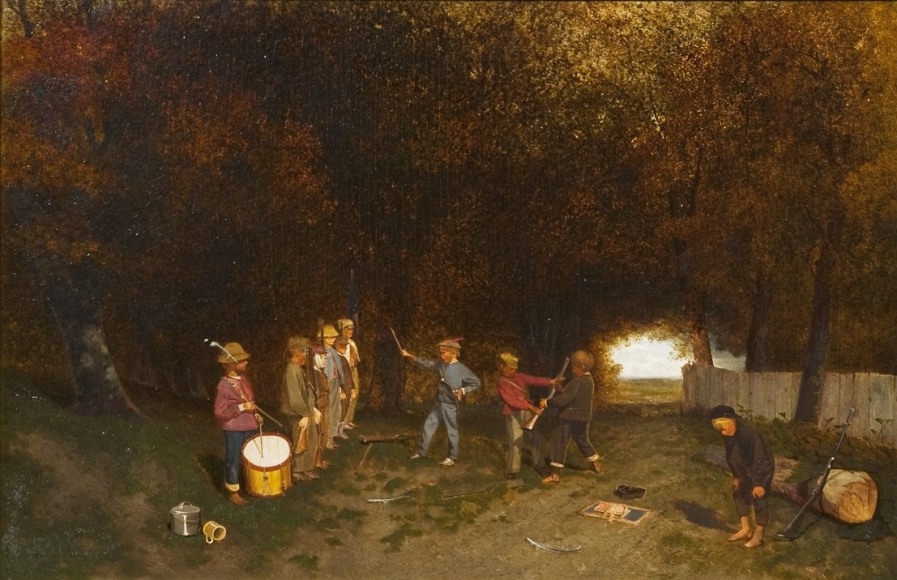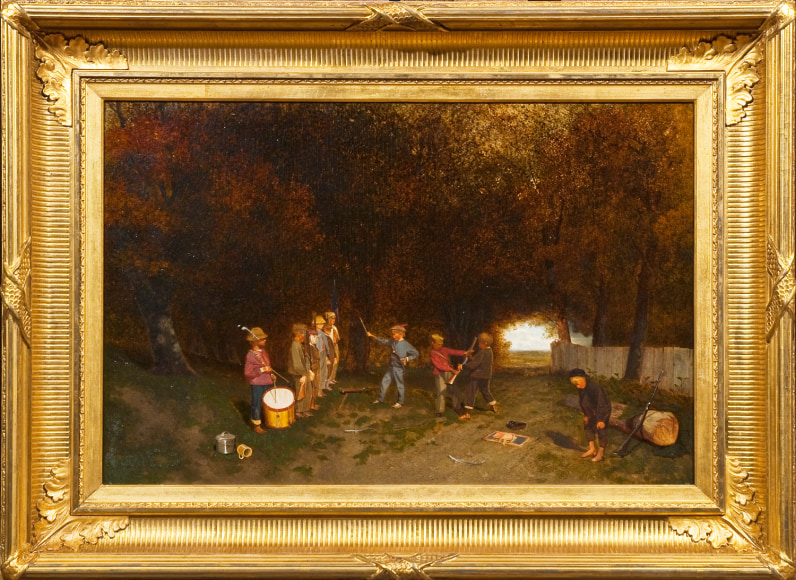
CHARLES CALEB WARD (1831–1896)
Independence Day, 1876
Oil on wood panel, 15 3/4 x 24 in.
Signed and dated (at lower left): Charles C. Ward / 1876
EXHIBITED: Hirschl & Adler Galleries, New York, 1979, Recent Acquisitions of American Art, 1769–1938, no. 28 illus. in color
EX COLL.: Dorothy Young, St. Andrews, New Brunswick, Canada; to [Hirschl & Adler Galleries, New York, 1978–80]; to [Andrew Crispo, New York]; to sale, Sotheby’s, New York, December 3, 1987, no. 93 illus. in color; to private collection, until 2007
Independence Day is one of the most compelling and technically accomplished of Ward’s known oils. In the painting, a group of young boys, gathered together beneath a resplendent canopy of autumn-colored boughs, reenact the call to arms of the Revolutionary Army. A single, self-styled sergeant addresses his troops with his baton raised high while the drummer boy at the end of the line awaits the call to begin his marching cadence. Two boys at center struggle over possession of a rifle, and another rolls up his trousers in anticipation of the war games. The golden hue that permeates the composition contributes to a warm sense of nostalgia for the innocence of youth. Ward here uses the humorous amusements of children to both play on our sympathies and to speak to the power of the spirit of independence that animates life in America, instilled as it is at such an early age.
Signed and dated 1876, Independence Day was probably painted in Ward’s New York studio. Though there is no record of Ward in New York at this juncture, the painting addresses such a quintessentially American subject that it would seem to place him in this country, where the market for such a painting was obviously the strongest. The timing of the execution of this oil, in the centennial year of the Declaration of Independence, too, was an inspired and opportunistic choice by the artist to capitalize on the patriotic sympathies of his American audience. Indeed, the nation was consumed with patriotic fervor in the Centennial year, symbolized most prominently by the great Centennial Exposition in Philadelphia that did so much to consolidate American identity and to point toward the progress of American culture. Whether Ward intended to send Independence Day to the Centennial Exposition is not known, nor is there any record of a public exhibition of the painting within the artist’s lifetime. Independence Day nevertheless is a clear embodiment of the spirit of its time, a genre painting with multiple layers of meaning surrounding the nature of American identity.




